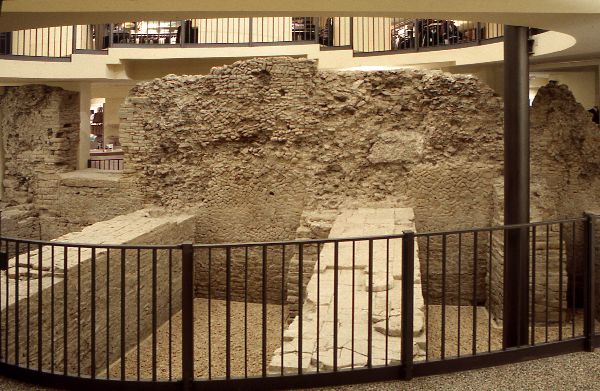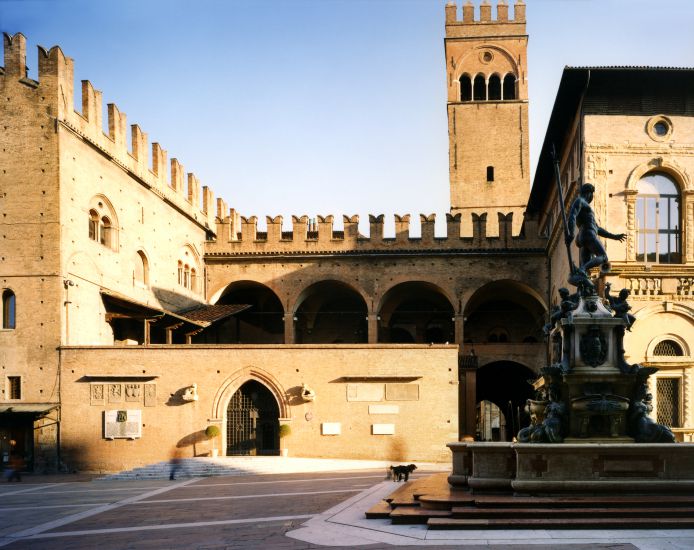Bononia the Roman city
Updated on 04 March 2020 From Comune di Bologna
Best known for its past connected to the Middle Ages and the Renaissance, Bologna still shows, in the old town, some remains dating back to the Roman age: architectural structures, road sections, fragments of mosaics and artefacts displayed in its museums which tell the story of the ancient Bononia, founded in 189 BC.

The Roman city took the place of the ancient Etruscan town Felsina and was arranged according to a very symmetrical layout, based on two main roads: the cardine Massimo (the main cardo), running north to south (via Galliera - via Val d'Aposa), and the decumano Massimo (the main decumanus), running east to west (via Rizzoli - via Ugo Bassi). A series of minor cardines and decumani run parallel to the major roads forming a web of rectangular blocks, about 105 m long and 70 m wide. Overall, these roads made up a grid about 600 metres wide. Particularly important for the city were Emperor Augustus, who had it rebuilt and embellished, and Emperor Nero, who convinced the Roman Senate to fund major building works, necessary after a massive fire had destroyed various monuments.
Extracts from the texts by Daniela Ferrari. Cultural Association ‘FE.BO. Archeologica’

ITINERARY
Biblioteca Salaborsa - Piazza del Nettuno, 3; Palazzo Re Enzo - Piazza Re Enzo; Teatro Romano - Via Carbonesi, 5; Museo della Storia di Bologna - Via Castiglione, 8; Basilica di Santo Stefano - Via Santo Stefano, 24; Palazzo Lupari - Strada Maggiore, 11; Museo Civico Archeologico - Via dell'Archiginnasio, 2; Palazzo Lenzi - Caprara - Piazza Galilei, 4 Download the brochure about Bononia Roma city here